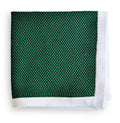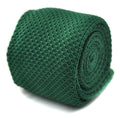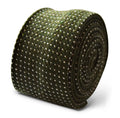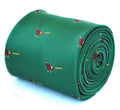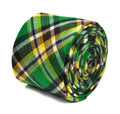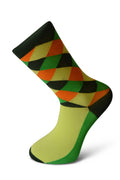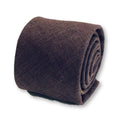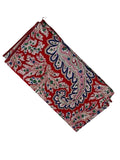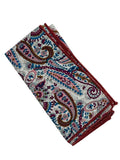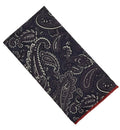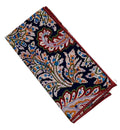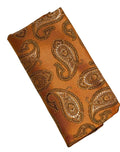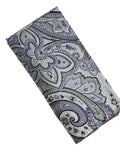FT Lifestyle: A beginner’s guide to drinking whisky
Posted by


Surely there’s nothing that evokes a cool, confident masculinity better than drinking whisky - just think of Don Draper, David Beckham, Sean Connery, Humphrey Bogart. However, whisky can be difficult to really get into – especially if you’re new to the drink (or, new to anything beyond Bells or Jack Daniels, at least).
That’s why we’ve put together this beginner’s guide to drinking whisky – it’ll give you everything from a brief history of the drink to advice on how to drink it, which whisky (or whiskey) to order and how to find the perfect whisky for you.
That way, next time you’re at a party, you can order yourself a whisky and make like you’re Don Draper. Having a whisky in your hand may not make you the coolest man in the room, but it’ll certainly make you feel like you are.
A (very) brief history of whisky
If you’ve ever chatted to somebody who likes drinking whisky, you’ll probably have noticed that – among other things – they like to pepper the conversation with little facts about its history. So, to start you on your journey to whisky-connoisseur, here’s a whistle stop tour of the history of whisky:
The word whisky, actually, comes from the Gaelic word usquebaugh. (Right, this bit gets a bit complicated.) Usquebaugh was a Gaelic word that was derived from the Scottish Gaelic uisge beatha (spelt in Irish Gaelic as uisce beatha.)
The word uisce (pronounced like whisky) comes from the Old Irish for ‘water’, while beatha comes from the word bethad, which meant ‘of life’. As a result, whisky – etymologically at least – means water of life.
However, lots of other details about the history of whisky are a bit foggy. Some people argue that whisky (and distilled alcohol) can be traced back to Babylonia, while others argue that the practice was first discovered by the Greeks in 100AD. All we know for sure is that, for Scottish whisky and Irish whiskey (more on that all-important e later) – the first documented occurrences were in the 1400s.
From there – due to royal predilections to drinking whisky – it went from strength to strength, with the distillation process maturing and improving over the years. Whisky went from a brutal, raw alcohol to the much smoother, nuanced whisky that we know today.
In fact, that modern whisky can be traced back to 1608 – when Old Bushmills Distillery was granted a license to distil whiskey, a practice that it continues to do today, making it the oldest whisky distillery in the world.
To e or not to e
Ah, that is the question. There’s lots of debate about the e. (Luckily, the pronunciation is the same, so you won’t risk looking silly, even if you’re talking about whiskey when you actually mean whisky.) Some people argue that the e is simply a dialect thing – a bit like how the Americans like to ignore the letter u in colour. Others say that the e represents where the whisky (or whiskey – this is going to get confusing) was made. If it’s spelt whisky, it was made in Scotland, Canada or Japan. If it’s spelt whiskey, it was probably made in Ireland or the United States.
Whisk(e)y Terms – a quick guide
OK, now we’ve got those details out of the way, it’s time to get to the nitty gritty – the different types of whisky. Unlike vodka, there are lots of different types of whisky, each with quite significant differences between them – and if you’re new to drinking whisky, it’s worth quickly brushing up on them.
Right, first we’ll deal with the malt and grain distinction:
Malt whisky is made up of mostly malted barley, while grain whisky is made from any type of grains (or a mix of grains).
After that, you get lots of different terms that you’ve probably heard – single malt, blended malt, single cask, cask strength. So let’s break those down too:

Single malt:
Single malt is whisky that has been made at one single distillery from just one malted grain. These are normally the fairly-higher end whiskies – the whisky with the distillery name and the age of the whisky.
Blended malt or malt:
These blended malts are made up different malt whiskies from different distilleries – the brand of whisky doesn’t necessarily indicate where it was distilled. These are the more wallet-friendly whiskies.
Cask strength:
These bad boys are rare – they are bottled straight from the cask without any dilution, making them the cream of the whisky crop. If you’re after one of these, prepare to wince as you hand over the cash.
Single cask:
Single cask whiskies are the less-expensive, but still very expensive sibling of the cask strength whiskies. They’ve been bottled from one cask of whisky, rather than a blend of different casks. As such, the taste of two whiskies from different casks may be slightly different.
Types of Whisky – another quick guide
Now we’ve established the ground rules for whisky, let’s get into the details. There’s a lot of different whisk(e)y out there, and each of them is different.
Scotch:
Unsurprisingly, Scotch is any whisky (note the lack of e) that has been made in Scotland with malted barley. Scotch is quite an acquired taste – it’s got a bit of bite and complex flavours.
One to start with:
Johnnie Walker Black Label – it’s never going to win awards for the best scotch, but it’s a nice, smooth entry-level scotch that can be used in whisky cocktails and sipped neat. After you’ve got used to Johnnie Walker, maybe move onto a single malt, like a 12 Year Old Glenlivet.
Irish:
Again, no surprises here – Irish whiskey (note the e) is produced in Ireland. In fact, by law, Irish whiskey must have been aged in Ireland for at least three years to be considered Irish whiskey! Irish whiskey, in comparison to Scotch, is distilled another time – meaning that it is triple distilled. It also – because it doesn’t use peat – has a far less smoky taste. For those new to drinking whisky (in this case, whiskey), Irish is much smoother and easier on the palate.
One to start with:
Like they say, sometimes the oldies are the goodies. And you can’t get older than the oldest distillery in the world – Bushmills. Bushmills’ 10-Year-Old Single Malt is smooth with a honey-flavour and vanilla notes. Jameson’s is always a safe bet too.

Bourbon:
For a whisky to be considered bourbon, the mash of grains must be at least 51% corn, rye, wheat, malted barley, or malted rye grain. On top of that, the mixture must be stored in charred oak containers. Bourbon has a characteristic sweetness and a slight smokiness as a result of the aging process.
One to start with:
Woodford Reserve or Buffalo Trace. They’ve both got the characteristic sweetness of bourbon, and taste great neat. (Plus, if you want to sound fancy, Woodford Reserve is an artisanal, hand crafted bourbon.)
Tennessee Whiskey:
OK, so Tennessee whiskey companies like to say that their whiskey is different to bourbon because it is filtered through charcoal (which is called the Lincoln Country Process, if it ever gets asked in a pub quiz). However, there’s not really much difference between Tennessee Whiskey and Bourbon, if you ask us.
One to start with:
Jack Daniels. A classic, rock’n’roll whiskey. It’s not particularly impressive, and has got a bit of a bad rep among whiskey people, but it’s still a fairly decent cheaper whiskey. (Although, maybe just treat yourself to a bottle of Buffalo Trace instead – it’s worth it.)
Rye:
Rye is actually quite similar to bourbon, but is made from at least 51% rye instead. Taste-wise, it’s also similar to bourbon (having aged in oak casks) but with a bit more bite. While bourbon is quite sweet, rye is a bit rougher, with more complex flavours.
One to start with:
Our personal favourite – Bulleit Rye. It’s wallet-friendly and incredibly smooth, with hints of cherries and vanilla, and subtle notes of leather and tobacco. Basically, it’s masculinity in drink form.
A guide to drinking whisky
There’s no right or wrong answer to this – drink it neat, drink it over ice, drink it in a cocktail, drink it over cold stones, drink it from the bottle, drink it with coke (just don’t let anybody see).
Although there’s a lot of snobbery about drinking whisky, the most important thing to remember is that the reason people are snobby is because they love whisky. They drink it because they enjoy it – and that’s how you should drink it too. If you like it over ice, drink it over ice – even if people tell you that it dilutes the drink too much. If you like it in an old fashioned, don’t let anybody scoff and tell you that real men drink their whisky neat. Just sit, sip and enjoy.
However, if you’re just starting out and want to start drinking whisky ‘the proper way’, then there are two accepted methods of drinking whisky – neat and with a splash of water. Neat is how the distiller intended it to be drunk – or at least that’s the argument people use. Take a sip, see how you like it and then decide whether to take a splash of water.
Others argue that a splash of water brings out the full bouquet (fancy term alert) of the whisky. Plus, it dilutes the alcohol enough to stop it anaesthetising your tongue as you drink, letting you savour the drink for longer.

Whisk(e)y cocktails
When it comes to drinking whisky at a party, you might not want to stand, slowly sipping and appreciating the complex flavours of a single malt that was aged in the Irish mountains. You might just want a smoky, interesting whisky drink – that’s where cocktails come in handy. Here’s a recipe for our favourite whisky cocktail – The Old Fashioned. (Fun fact: The Old Fashioned cocktail was invented to cover the taste of ropey moonshine whiskies).
Grab yourself a bottle of bourbon, make one of these and pretend that you’re in Mad Men.
Ingredients
1 teaspoon brown sugar (or a brown sugar cube)
3/4 dashes of Angostura Bitters
50ml Bourbon of your choice. (We recommend Bulleit, Buffalo Trace, Woodford Reserve or Maker’s Mark)
Cubed ice
1 orange
Making it, the old fashioned way:
To start, take a short glass and add the sugar to the bottom of it. Splash in your bitters and a few drops of water. Stir the mix until all of the sugar has dissolved and you’ve got a sugary sludge. Then, throw in the ice cubes and half of your bourbon and stir for about a minute or so. Then add the other half of the whiskey and stir again.
Next, grab the orange and cut off a piece of the peal. You don’t want any flesh – you’re after the oils in the skin. Cut a piece about the size of your thumb and squeeze it over the drink, releasing the oils into it. Then, throw the peel in the drink and stir.
Image Credits: Flickr, Jamie Oliver,Rockster


